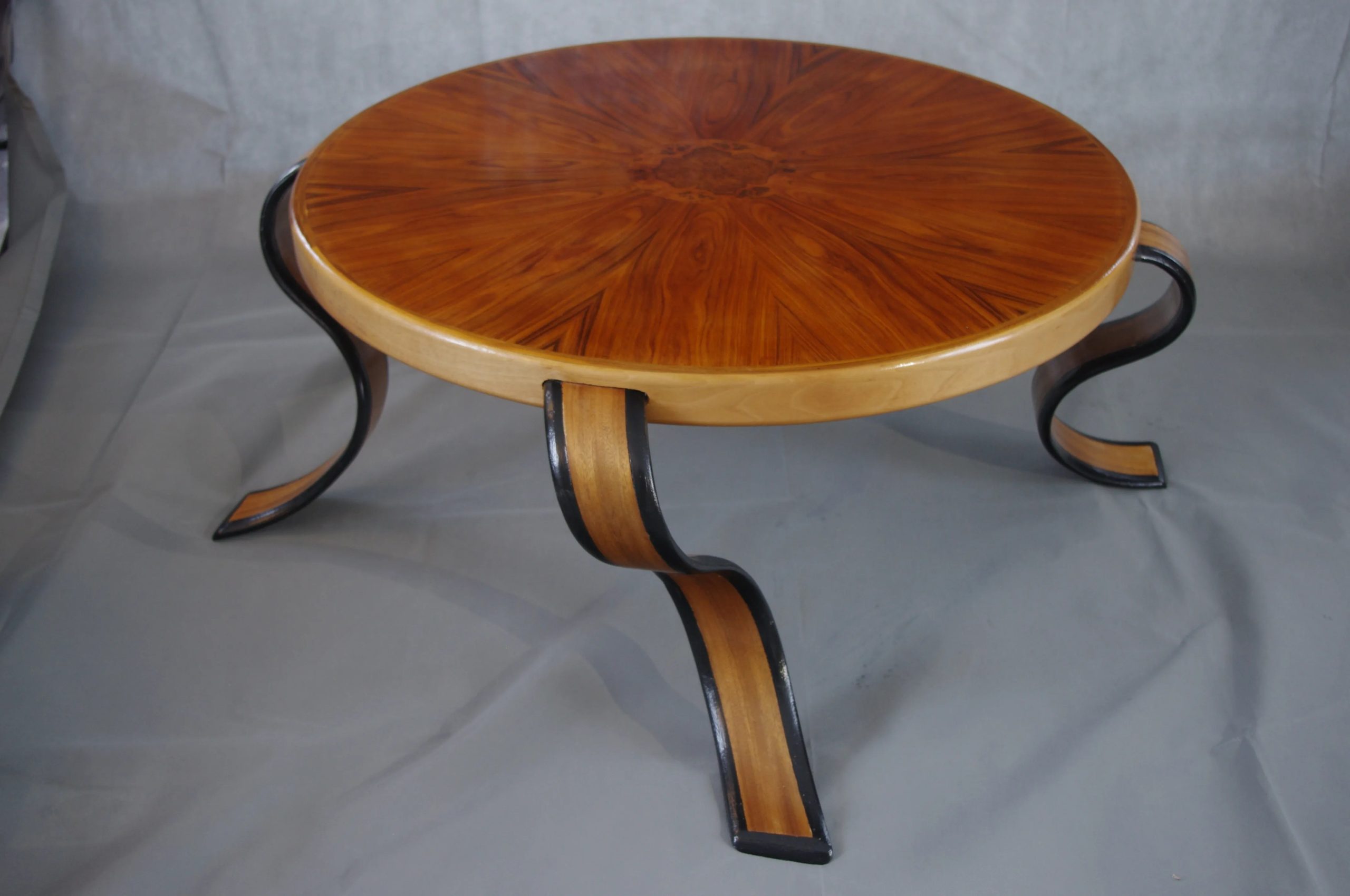Get ready to step into the glittering world of Art Deco and discover the art of finding and styling the perfect coffee table. These iconic pieces, straight out of the dazzling 1920s and 1930s, have a timeless charm that will add a touch of elegance to any room. Whether you’re a seasoned collector or just looking to spice up your home with vintage flair, this guide will give you the inside scoop on everything Art Deco. We’ll explore the history, the key design elements, and the steps you need to take to find the coffee table that will make your living room look like a million bucks.
Unveiling the Allure of Art Deco Coffee Tables
Thinking about an Art Deco coffee table? Excellent choice! More than just tables, these pieces are like functional sculptures that embody the glamour and progressive spirit of the 1920s and 30s. Imagine a sleek, stylish car from that era – that’s the vibe Art Deco tables go for – smooth, flowing lines, and pure elegance.
So, what exactly makes them so special?
The Defining Features of Art Deco
Art Deco coffee tables have this unique look that’s really easy to spot, characterized by bold geometric shapes combined in eye-catching ways. These striking silhouettes are often crafted from luxurious materials like rich, dark woods such as ebony and mahogany. You’ll frequently find gleaming chrome that reflects the surrounding room, and perhaps even some shiny glass or intricate details.
Geometric Boldness Meets Luxurious Materials
- Shapes: Think squares, rectangles, circles, and triangles—all interacting to create visually captivating designs.
- Lines: Strong, balanced lines define these pieces, reminiscent of a perfectly measured painting.
- Materials: Art Deco screams luxury, frequently using rich, dark woods like ebony and mahogany. The glimmer of polished metals, such as brass and chrome, adds a touch of sophistication. Glass, mirrors, and even early plastics like Bakelite make an appearance, introducing different textures and sheens.
- Patterns: Don’t forget the eye-catching patterns! Art Deco often features sunbursts, zigzags, chevrons, and stylized flowers for a modern twist.
Finding Your Perfect Art Deco Coffee Table
Ready to start your treasure hunt? You’ve got options! Whether you’re into the thrill of discovering a vintage gem or prefer modern interpretations of this classic style, here’s where to look:
Online Treasure Hunting:
- Etsy: This online marketplace is your go-to for handmade, vintage, and antique Art Deco coffee tables. Expect to find an abundance of one-of-a-kind pieces here.
- 1stDibs: If you’re searching for something truly special and high-end, 1stDibs is your destination. Their curated collection of vintage and antique furniture includes stunning Art Deco pieces.
- Chairish: Another fantastic resource for vintage and antique lovers, Chairish offers a wide selection of Art Deco coffee tables, often with detailed descriptions and images.
- Amazon: Don’t underestimate the power of Amazon! You can find a diverse range of new and affordable Art Deco-inspired coffee tables for sale from numerous brands.
Beyond the Internet:
- Antique Shops: These treasure troves offer the potential to discover authentic Art Deco pieces. Just be prepared to potentially spend a little more and to take your time carefully inspecting the condition of any table that catches your eye.
- Flea Markets & Estate Sales: For those who relish the thrill of the hunt, flea markets and estate sales are a must! You might just stumble upon a hidden gem at a bargain price, but be prepared to exercise patience and a keen eye for detail.
Smart Shopping Tips:
Before you make a purchase, keep these essential tips in mind:
- Authenticity: Is it the real deal or a reproduction? Pay close attention to the materials used, the quality of construction, and the design details to determine whether a piece is likely an original. If something feels off, it’s wise to do a little more research.
- Condition: It’s important to be realistic – vintage and antique pieces may have some bumps and bruises from their past. Carefully inspect for scratches, dents, or repairs. Some imperfections can add character, but others might mean the piece requires some TLC from an expert restorer.
- Price: Don’t settle for the first price tag you see. Research similar tables to understand what’s fair for the piece’s age, condition, and rarity. You might even be able to negotiate a better deal, especially in person.
- Shipping & Handling: This can be a significant factor, especially for larger, heavier pieces. Factor in the cost of shipping and potential restoration costs, particularly when buying online.
Finding the perfect Art Deco coffee table might take some time and effort, but it’s an investment worth making. This statement piece will elevate your living room and become a conversation starter for years to come, adding a touch of vintage glamour to your home. Take a warm and comfy break with our anthropologie coffee table and accentuate a soft ambiance with our anthropologie blanket.
Decoding Deco: The Ultimate Guide to Identifying Art Deco Furniture
You’ve been bitten by the vintage bug and have your eye on a piece that just screams “roaring twenties.” But how can you be sure it’s genuinely Art Deco and not a clever imitation? Art Deco design, while diverse, possesses a distinctive visual language that sets it apart. It’s a captivating blend of geometric boldness and an unapologetic embrace of luxurious materials.
The Symphony of Design: Identifying Art Deco
Art Deco whispers of a glamorous past, speaking through its characteristic design elements. Remember, it’s not about searching for a single “Art Deco” stamp; the true essence of this style reveals itself in the harmonious interplay of its features.
1. Geometry Takes Center Stage:
Think of those iconic images of the Chrysler Building—Art Deco adores geometric shapes. When examining a piece, pay close attention to the presence of these forms:
- Shapes to Look For: Rectangles, triangles, circles, zigzags, chevrons, and sunburst patterns are all telltale signs.
- Where to Find Them: These geometric elements can be found in the overall silhouette of the furniture, the design of the legs or backrests, or incorporated as decorative motifs.
2. A Love Affair with Luxurious Materials:
Art Deco was never afraid to show off a little opulence. Prepare to be dazzled by a symphony of rich materials:
- Woods: Deep, rich woods like ebony and mahogany were favorites, lending an air of sophistication. You might also encounter rosewood, zebrawood, or bird’s-eye maple, each prized for its distinctive grain patterns and hues.
- Metals: Gleaming metals like chrome, nickel, brass, stainless steel, and aluminum were essential to the Art Deco aesthetic. These were often used in polished or contrasting finishes to create visual interest.
- Other Indulgent Materials: Don’t overlook the presence of glass (mirrored, etched, or opaque), Bakelite (an early plastic), lacquer, or inlays made from ivory, mother-of-pearl, or exotic woods.
3. Design Elements That Define an Era:
- “Waterfall” Style: This distinctive characteristic features cascading curves, most often seen on the edges of furniture. Picture the graceful flow of water as it tumbles over rocks.
- Symmetry in Design: Art Deco often celebrates balance and order through symmetrical designs. Look for pieces where one side mirrors the other.
- Intricate Details That Captivate: Pay attention to the smaller details. Art Deco artisans often incorporated stylized floral motifs, sunbursts, animal figures, and intricate geometric patterns into their work.
People’s Statement:
“Original Art Deco Furniture typically has: A strong sense of geometry. Inlays and Patterns on the wood surfaces, like drawer fronts and dresser tops. May have “Waterfall” or soft curved edges. Bakelite (Often orangish or white plastic material) and Metal Hardware. Fans, Stripes and Diamond Motifs.”
Authentic vs. Reproduction: Separating Treasures from Trends
While modern interpretations of Art Deco abound, nothing compares to the allure of an authentic piece. But how can you tell the difference? Here’s what to look for:
Construction:
- Authentic: Expect to see signs of high-quality craftsmanship. Authentic Art Deco pieces were often handmade (or at least involved significant handwork) and feature techniques like dovetail joints and other traditional methods known for their durability.
- Reproductions: Reproductions may utilize cheaper materials, mass-produced techniques, and less durable joinery.
Materials:
- Authentic: The use of period-specific materials like Bakelite or certain types of wood veneers can help confirm a piece’s authenticity.
- Reproductions: Modern reproductions may substitute these materials with less expensive or more readily available alternatives.
Patina and Wear:
- Authentic: An authentic piece will likely show signs of age. This might include a patina on metal surfaces, slight fading of finishes, or minor imperfections. These signs of age, when consistent with the piece’s history, add to its character and value.
- Reproductions: Reproductions, especially newly made ones, will typically be pristine and lack the character that comes with age.
People’s Statement:
“To distinguish new items from old ones in terms of the Art Deco style, look at the materials used and the construction of the item. If the new items are exact copies of old pieces, they would be categorized as reproductions.”
Where to Embark on Your Art Deco Furniture Hunt:
- Antique Shops and Dealers: Reputable sources specializing in furniture from the Art Deco era are invaluable resources for finding authentic pieces.
- Auctions: Both online and in-person auctions can be treasure troves for Art Deco furniture. Be sure to thoroughly research beforehand.
- Estate Sales: These sales present exciting opportunities to uncover hidden gems at potentially more reasonable prices.
- Online Marketplaces: While online marketplaces offer convenience, it’s crucial to exercise caution and verify authenticity. Sites like 1stDibs, Etsy, and even eBay (with careful vetting of sellers) can be good starting points.
Mastering the art of identifying Art Deco furniture is a thrilling journey for the discerning eye. As you become more familiar with the style’s defining characteristics, you’ll begin to recognize the whispers of a glamorous past embedded in these timeless pieces.
Beyond Ebony: Unveiling the Diverse Woods of Art Deco Furniture
Art Deco furniture transcended mere function; it was an expression of luxury, innovation, and a celebration of the finest materials. Wood, with its natural beauty and versatility, played a starring role in this design movement. While the deep, luxurious allure of ebony often takes center stage in discussions of Art Deco, a closer look reveals a fascinating palette of woods that contributed to the era’s unique style.
The Allure of Ebony:
Ebony, prized for its deep black hue, lustrous finish, and fine texture, was often regarded as the “wood of choice” during the Art Deco period. Its inherent elegance and association with luxury made it a fitting material for those statement pieces meant to command attention. However, due to its rarity and cost, ebony was frequently reserved for high-end furniture.
Exploring the Spectrum of Woods:
While ebony held a prominent position, Art Deco artisans masterfully incorporated a diverse range of woods, each lending its unique character and contributing to the movement’s diverse aesthetic.
-
Walnut: Known for its warm brown tones and attractive grain patterns, walnut provided a more attainable alternative to ebony. It was favored for its inherent strength, durability, and ability to showcase the craftsmanship of woodworking techniques. Burl walnut, with its captivating swirling grain, was particularly popular for its decorative appeal.
-
Maple: Maple, with its light, creamy color and typically subtle grain, offered a contrasting aesthetic to the drama of ebony. It provided a sense of lightness and airiness, reflecting the era’s fascination with streamlining and modernity. Maple’s ability to take stain well made it particularly versatile for achieving the variety of finishes characteristic of Art Deco furniture.
-
Ash: Prized for its strength, flexibility, and light color, ash became the go-to wood for creating the iconic bentwood furniture designs that defined the Art Deco era. Its ability to be steamed and bent into graceful curves allowed designers to achieve the flowing lines and sense of movement often associated with the style.
Exotic Woods and the Allure of the Far East:
The Art Deco movement coincided with a period of increased global travel and trade, leading to a fascination with exotic materials from distant lands.
-
Tropical Woods: Richly hued and strikingly patterned woods from tropical regions were embraced for their luxurious qualities. Rosewood, with its warm reddish-brown tones and often dramatic grain patterns, became a sought-after choice, as did zebrawood, known for its bold stripes, and mahogany, prized for its reddish-brown color and durability.
-
Veneering and Marquetry: To maximize the beauty and minimize the cost of rare and expensive woods, artisans skillfully employed veneering and marquetry techniques. Veneering involved applying thin sheets of exotic wood to a more common and less expensive base wood, creating the illusion of a solid piece while conserving precious materials. Marquetry elevated this technique, utilizing different types and colors of veneer to craft intricate patterns, designs, and even pictorial scenes.
Beyond Wood: A Fusion of Materials
While wood undoubtedly served as a foundational material in Art Deco furniture, the style reveled in a fusion of materials, reflecting the era’s technological advancements and evolving design sensibilities.
-
Metal: Sleek, polished metals, often with industrial inspirations, became defining characteristics of Art Deco furniture. Chrome-plated steel, a symbol of modernity and innovation, was widely used for its reflective qualities and ability to add a touch of streamlined glamour. Polished brass and nickel also played key roles, adding warmth, shine, and decorative accents.
-
Glass: Glass, in its many forms, became an integral part of the Art Deco aesthetic. Mirrors, often with etched or geometric designs, were used to amplify light and create an illusion of spaciousness. Etched glass panels added a touch of privacy and Art Deco motifs to cabinets and doors, while glass tabletops, sometimes with mirrored surfaces, introduced a sense of lightness and sophistication.
-
Lacquer: Inspired by Asian artistry, Japanese lacquer, known for its high-gloss finish and exceptional durability, became a popular treatment for Art Deco furniture. Often applied in multiple layers and meticulously polished, lacquer enhanced the richness of the wood grain while providing a surface that beautifully reflected light, adding to the era’s signature sense of luxury and glamour.
Unveiling Deeper Insights:
-
Sustainability Concerns: As we move towards a more eco-conscious world, it’s important to consider the environmental impact of using exotic woods in furniture, both in the past and present. Many of the tropical woods heavily utilized during the Art Deco period are now considered endangered or threatened. This raises important questions for modern designers and collectors about responsible sourcing, the use of sustainable alternatives, and the importance of restoration and preservation.
-
Regional Variations: Exploring the regional variations in wood choices for Art Deco furniture can reveal fascinating insights into cultural influences, material availability, and design preferences. For example, French Art Deco furniture might exhibit different wood preferences compared to its American counterpart due to factors like access to specific species and prevailing design aesthetics.
-
Beyond the Surface: The Art of Woodworking: Delving into the craftsmanship and techniques used to work with these woods enhances our appreciation for the artistry of Art Deco furniture. Veneering and marquetry, for example, required exceptional skill and precision, turning wood into a canvas for intricate artistry. Understanding these techniques enables us to better appreciate the time, skill, and dedication that went into creating these timeless pieces.
-
Becoming a Savvy Collector: Arming yourself with the knowledge to identify different wood types in Art Deco furniture empowers you to become a more informed collector. By understanding the specific qualities and historical context of different woods, you can better assess the authenticity, value, and potential investment potential of a piece.
The woods used in Art Deco furniture tell a story of luxury, innovation, and global interconnectedness. By understanding the characteristics, historical context, and craftsmanship associated with these materials, we gain a deeper appreciation for the enduring allure of this iconic design movement.
- Memorial Stones for Gardens: A Guide to Creating a Lasting Tribute - April 29, 2025
- Melon Cut Diamonds: A Comprehensive Guide - April 29, 2025
- MarketStreet Lynnfield Stores: A Complete Directory & Shopping Guide - April 29, 2025










